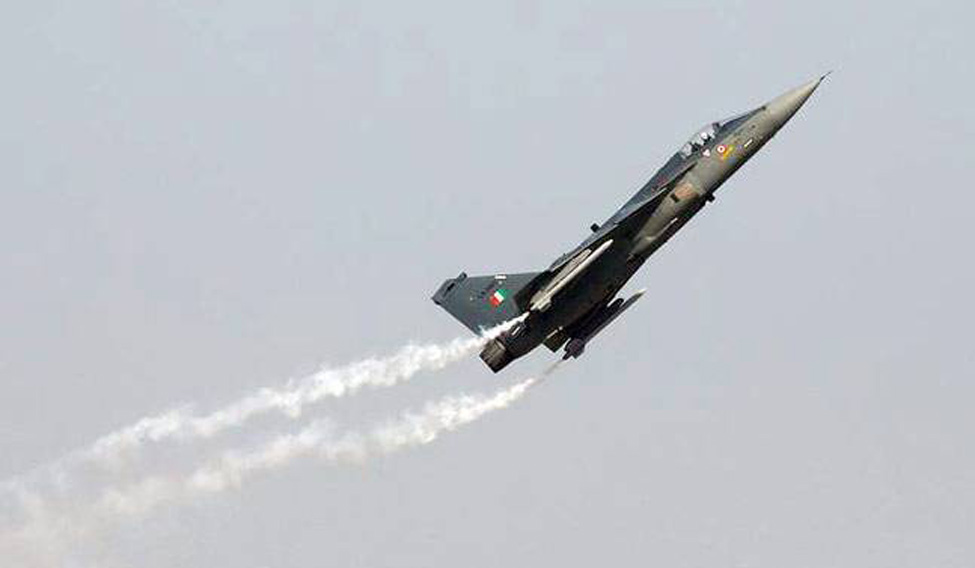Indian Air Force is keeping its fingers crossed to have upgraded Light Combat Aircraft Tejas with its enhanced offensive capability, as the Final Operation Clearance (FOC) that makes fighter jet a battle worthy, is still a distance away. With repeated delays, HAL, manufacturer of the Tejas is expecting to get FOC by the end of 2018. Last year, IAF had asked for 42 minor and major modifications in the aircraft, which are yet to be incorporated by its developer.
Early this week, IAF has placed order for 83 Tejas aircraft with HAL. Of these, 73 will be the upgraded version called the ‘Mark-1A’ and remaining 10 will be its trainer version. IAF order will be as per required specifications, approved as per the existing FOC.
Main modifications, which IAF is eyeing include AESA radar in place of the manually scanned Israeli Elta radar, external mid-air refuelling capability, Electronic warfare, a self protection jammer and integration of Beyond-Visual- Range Air-to- Air Missiles. In order to meet the IAF's requirement, HAL has already issued tenders to procure these warfare systems so that it can be loaded in the aircraft as early as possible.
Speaking to THE WEEK, HAL's spokesperson claimed that the FOC schedule is on time. "We are targetting FOC before the end of 2018. Tenders have been issued and evaluation process is on for the upgrades," said company spokesperson.
"Though HAL has managed to do majority of upgrades in the aircraft, four of these modifications are yet to be done to make the aircraft battle worthy, " said an IAF official.
Out of 20 Tejas fighter jets ordered in the Initial Operation Clearance (ICO) configuration, IAF is operating five Tejas fighters, inducted in the squadron named as 45 in July 2016 and remaining 15 will be delivered by HAL next year.
Air Vice Marshal Manmohan Bahadur (retd) says it is high time for the state owned HAL to pull up its socks to deliver the project on time, as Tejas is going to replace air force's ageing fleet of MiG-21 and MiG 27.
"HAL really needs to pull up its socks because its history is not good. MoD has to crack the whip. We need to get numbers in terms to enhance our capability. IAF is now depending on Tejas to bridge the gap its capability deficit," AVM Manmohan Bahadur told THE WEEK. IAF presently operating with 33 squadrons comparing to 42 squadrons required to handle the two front scenario.
IAF's combat fleet is depleting fast. By 2032, it will be come down to 27 and 19 squadrons by 2042.
LCA Tejas, an over three-decade-old project is a single seat, single engine multi-role light fighter aircraft developed by HAL, claiming to be nearly 60 per cent indigenous. It has the fly by wire, state of the art open architecture computer for avionics and better weapon and combat capability.
However, last month, IAF, while pitching for case to have single engine fighter jet, told the government that Tejas is not enough to protect Indian skies with its limited capabilities. IAF is believed to have told the the ministry of defence that the "endurance" of Tejas in combat is just about 59 minutes and can carry a pay-load of about three tons, which are much below the capability of other single-engine jets available in the global market. IAF also informed the government that the maintenance cost of Tejas is also very high as it needs 20 hours of serving for every hour of flying. And in order to maintain its operational effectiveness, IAF is all set to issue global tenders for the single engine fighters.
While comparing with Rafale, Bahadur claims that both are different platform and can not be compared.
Comptroller and Auditor General of India, in its report on Tejas tabled in Parliament in 2015, had also come down heavily on the program. CAG pointed out 53 significant shortfalls in its Mark-I version that have reduced its operational capabilities and survivability.
- In order to replace its MiG 21 fleet—manufactured between 1966-1987—IAF had proposed new aircraft in early 1980.
- Project to design and develop the LCA was sanctioned in 1983 at a cost of Rs 560 crore, which was enhanced to Rs 10,397.11 crore over the time.
- In June 1984, the government constituted the ADA for managing the project.
- In 1985, IAF came out with its Air Staff Requirement, envisaging a lightweight multi-mission fighter with contemporary air combat and offensive air support capabilities along with excellent manoeuvrability for close air combat at low and medium altitudes. IAF required 220 LCAs (200 Fighters, 20 trainers) to be inducted by 1994.
- With repeated delays, LCA could achieve Initial Operational Clearance only in December 2013, eight years after it was originally scheduled.
- Full Operational Clearance (FOC), scheduled to be completed by December 2008, is yet to be achieved.





